FRANCE
1. Eiffel Tower
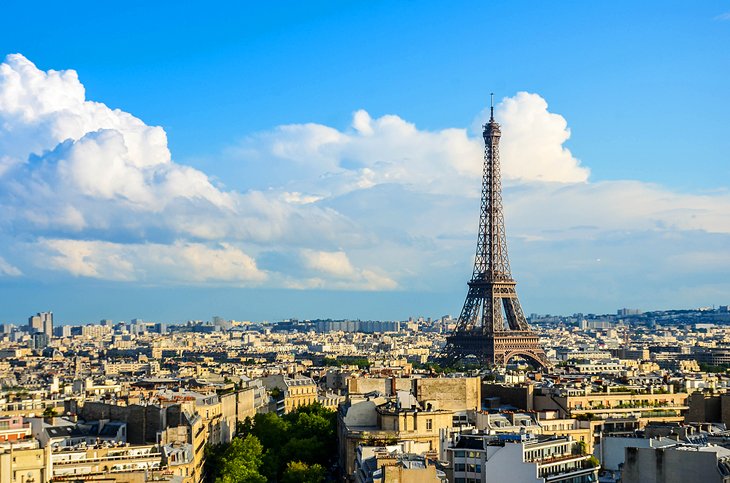
The symbol of Paris, the Eiffel Tower is one of the world’s most famous landmarks. This feat of ingenuity is a structure of 8,000 metallic parts, designed by Gustave Eiffel as a temporary exhibit for the World Fair of 1889. Originally loathed by critics, the 320-meter-high tower is now a beloved and irreplaceable fixture of the Paris skyline. The structure’s unique gracefulness has earned it the nickname of “Iron Lady.” Visitors are impressed by the tower’s monumental size and the breathtaking panoramas at each of the three levels. Tourists can dine with a view at the first level or indulge at the Michelin-starred Jules Vernes restaurant on the second level. At the exhilarating height of 276 meters, the top level offers a sweeping outlook over the city of Paris and beyond-extending as far as 70 kilometers on a clear day.
2. Louvre Museum
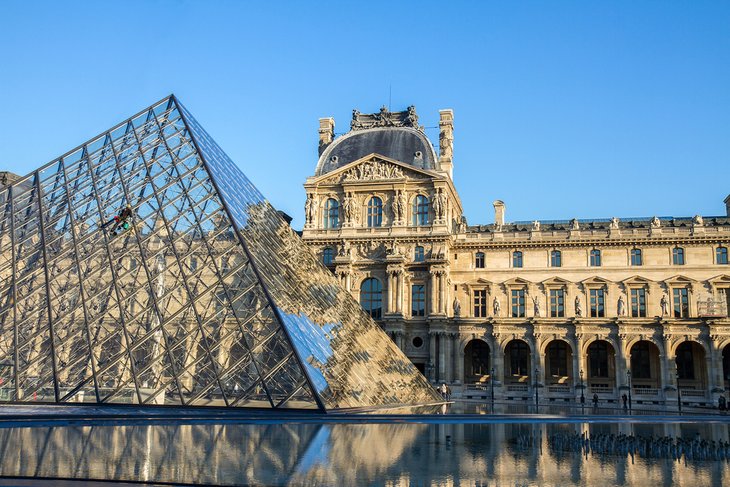
In the former royal palace of French Kings, the Louvre is an incomparable museum that ranks among the top European collections of fine arts. Many of Western Civilization’s most famous works are found here including the Mona Lisa by Leonardo DaVinci, the Wedding Feast at Cana by Veronese, and the 1st-century-BC Venus de Milo sculpture. The collection owes its wealth to the contributions of various kings who lived in the Louvre. Other pieces were added as a result of France’s treaties with the Vatican and the Republic of Venice, and from the spoils of Napoléon I. The Louvre has an astounding collection of 30,000 artworks, including countless masterpieces. It’s impossible to see it all in a day or even in a week. Focus on a shortlist of key artworks for the most rewarding experience.
USA
1. NIAGARA FALLS
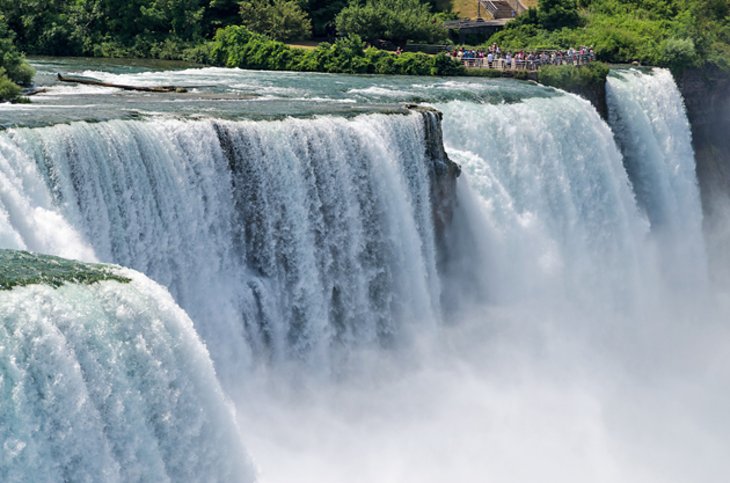
Situated along the Canada-US border, Niagara Falls is one of the most famous waterfalls in the world. The water from Lake Erie flows into Lake Ontario over these massive waterfalls, known for the great quantity of water that is constantly tumbling over the vertical drop. The amount of water going over the falls is actually reduced in winter, when more water is used to produce hydroelectric power. Most visitors will not notice a difference.
Niagara Falls is actually a set of three falls, consisting of the largest section known as Horseshoe Falls, a second section on the American side of the river known as the American Falls, and a much thinner section located next to the American Falls, known as Bridal Veil Falls. On clear days, the plume of mist rising from Niagara Falls can be seen from as far away as the CN Tower in downtown Toronto, Canada, on the opposite shore of Lake Ontario.
2. STATUE OF LIBERTY

A universal symbol of freedom, the Statue of Liberty is America’s most familiar icon and the largest statue in the world. Standing 152 ft in New York Harbor, visitors can admire the statue from various points around the city, particularly Battery Park, or take a ferry right to the statue. For people who plan to go out to the statue, options include grounds tickets, pedestal tickets, or crown tickets, which allow different levels of access to the site. Anyone who plans on going inside the Statue of Liberty is encouraged to make advanced ticket reservations.
3. SPAIN
1. The Alhambra and Generalife Gardens, Granada
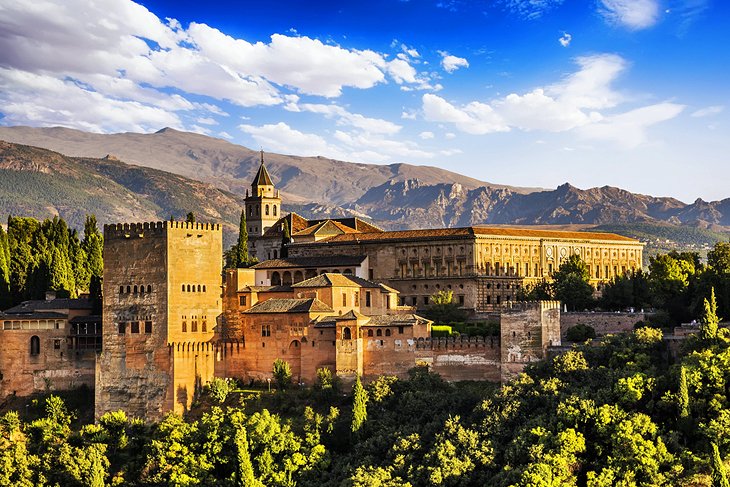
No matter how much you have read or how many pictures you have seen of Granada’s Alhambra palaces, this Moorish pleasure palace will still take your breath away. The Nasrid dynasty’s royal palace is the artistic highlight of Spain’s Islamic period, when Al-Andalus – as they called Andalucía – represented the epitome of culture and civilization in Europe’s Middle Ages.
The Alhambra complex includes several buildings, towers, walls, gardens, and a mosque, but it’s the indescribably intricate stone carvings, the delicate filigrees, the magnificent tile-lined ceilings, the graceful arches, and serene courtyards of the Nasrid palace that will haunt your dreams. That said, the adjoining palace built for the Emperor Charles V, even in its unfinished state is the finest example of High Renaissance architecture in Spain. And Generalife’s terraced gardens offer a peaceful respite from the grandeur and splendid views back at the rest of the Alhambra.
2. Barcelona’s Sagrada Familia and Gaudi Sites
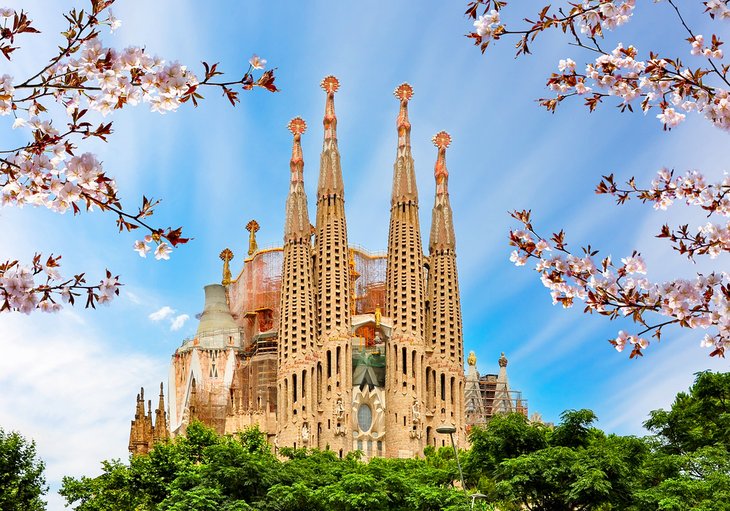
Antoni Gaudi took the architectural style known as Art Nouveau a step farther, even, some have argued, into absurdity. The fanciful and outrageous buildings he created in Barcelona have become landmarks, the signature attractions of this Catalan city. Foremost is The Sagrada Família church, officially the Temple Expiatori de la Sagrada Família or the Holy Family Church of the Atonement. One of Europe’s most unconventional churches, it is also unfinished, so as you look down from its tower you can see the work in progress below.
You may search in vain for absolute straight lines in Gaudi’s Casa Milà, his last and most famous secular work; it resembles a piece of sculpture more than a functional building. Be sure to ascend to its roof – the chimneys are said to have inspired the image of Darth Vader from Star Wars. Parc Güell overlooks the city from a hillside, the views and gardens framed by fantastical creatures – salamanders, fish, an octopus – and designs in bright ceramic-chard mosaics. A fanciful towered house near the entrance is largely covered in colored ceramics. Unlike most buildings, Gaudi’s appeal even to children and to adults who don’t care a thing about architecture, for one simple reason – they are just plain fun to look at.
